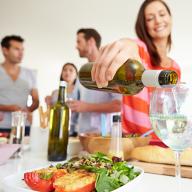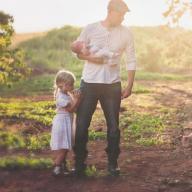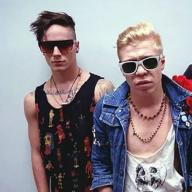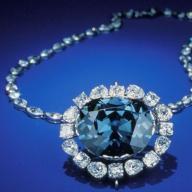A wooden horse, placed in your office or on your desk, will give you speed in completing work tasks, endurance, which will allow you to work without getting tired, as well as good luck in all your endeavors. Like the dreamy Hedgehog from the cartoon “The Amazing Barrel,” I suggest you “grow” your own Horse out of a barrel...
We will need the following materials and tools:
- 1. Cardboard cylinder from paper;
- 2. Twine;
- 3. Wire;
- 4. Kinder surprise capsule;
- 5. Glue "Titan";
- 6. Scotch tape;
- 7. Eyes;
- 8. Cardboard;
- 9. Ribbon for decoration;
- 10. Clothespins;
- 11. Scissors.

1. We start by preparing the base for the barrel (the body of the Horse).
Take a cardboard cylinder from toilet paper, half a clothespin and mark the fold line.

Up to the fold line, we make cuts with scissors at a distance of 5-7 mm.

We bend both sides inward.

Cut out 2 circles, the diameter of the cylinder.

Glue it to the cylinder with Titan glue or a hot gun. For strength, glue a cardboard circle or lid inside on one side. The base is ready!

For the head, take a capsule and glue with tape a wire that is not completely twisted (22 cm).

For the legs, cut 2 pieces of wire 54 cm long. Fold them in half and make loops at the ends.

We grab the loops with both hands and begin to twist.

Give the legs the desired shape.

We begin to wrap the head with twine from the center, coating the capsule with Titan glue.


We wrap the frame of the legs with twine.

Glue the legs and head to the base of the barrel (torso).

We lay the twine in a spiral on both sides.

Let's start gluing the base with clothespins. We will need 9 pieces or 18 halves. We start from the center (from the neck), adding one at a time from different sides.

The horse is almost ready...

We make ears by folding the twine into a droplet, gluing each turn.

For the tail and mane, cut 16 cm pieces of twine. Unroll the pieces into reverse side, split into 2 parts. We tie the sections for the tail in the middle, leaving a larger part for the mane than for the bangs.

Glue the mane and tail to the horse with a hot gun.

All that remains is to make a good look and slightly decorate it.

Our amazing Horse is ready! The horse can take any position thanks to the flexible wire frame.

Let's admire it!


The article talks about how to prepare a fake wooden horse for painting. On stage our horse will be a classic carousel horse.
The horse was made from 8 mm thick plywood: two symmetrical horse figures were cut out, they were fastened together with several 5 cm thick bars, and placed on a square metal support profile. Everything was fastened with self-tapping screws. Next, the internal space between the figures is foamed polyurethane foam. After the foam has dried, its excess is cut off with a cutter along the contour of the horse.
Plywood decorations cannot be painted directly on plywood both for safety reasons during further use (burrs, sharp edges on plywood cuts) and for artistic and decorative standards. Therefore, plywood decorations are always covered with calico or double-thread fabric before painting.
To begin with, we filled all the chips and other defects of the plywood with regular construction putty on our wooden horse. The screws are painted with oil (nitro) paint to prevent them from rusting.
|
We lay the horse horizontally and coat the plywood with PVA glue, not sparing it. We put calico on top, smooth it out, as when gluing wallpaper, from the center to the edges. We stretch the fabric so that there are no “bubbles” later (if they do appear when the fabric dries, you need to, just like when working with wallpaper, pierce the bubbles with a pin, apply glue again and smooth it out).
Do not try to stretch the fabric over the entire surface of a large decoration at once and cut the fabric with small allowances. |
Carefully paste over the horse's head. We cut the fabric taking into account the hem at the end of the figure, and cut it. Once again coat the top of the fabric thoroughly with PVA glue. We paste over the remaining parts of the decoration. We leave the horse to lie until the glue dries completely. Then we turn the figure over and paste over the other side of the horse.
|
We cover the end parts of the horse with a narrow strip of calico
|
The horse is left to dry the glue
|
If your decoration involves finely detailed drawing of details with paints (as on our horse) or the decoration will be in light colors, then the surface must be primed before painting, that is, pre-coated with water-based paint. The resulting surface is practically an artistic canvas. The horse is primed with water emulsion and ready for painting:
|
Horse at the coloring stage. High-quality water-based paint, tint and acrylic paint are used.
|
After the paints have dried, coat the wooden horse with acrylic matte varnish The fake wooden horse for the carousel is painted. The “saddle” can also be painted or covered with fabric and foam rubber. |
| A fake wooden horse was made in the Tyumen youth theater "Engagement" for the play "The Mystery of the Enchanted Portrait" according to sketches by production designer Olga Trofimova, Tyumen, May 2012. |
The wooden horse that came to me was already covered with a thick layer of acrylic varnish. Unfortunately, manufacturers do not always assume that the buyer will want to paint or paint the toy at his own discretion. So my painting was done not as usual, with gouache under varnish, but acrylic paints over varnish (I emphasize - acrylic varnish; if alkyd varnish had been applied to wood, I don’t even know if the paint would have held up at all).

A children's rocking horse is a fairly large thing, but at the same time, it is made up of narrow and slender parts. So the width of the runners does not even reach 5 cm, the legs and neck are also in some places no wider than the palm of your hand. It turns out that the horse, on the one hand, asks for bright and large elements, but on the other hand, it seems to have no area for them.
I realized all this immediately and, working on the composition, I tried to use a more or less acceptable scale for the main elements, but it is possible that I did not accept the most correct solution and a small but rich painting would look better. In general, you need to try everything.
The composition was planned, as always, on paper.



It is clear that in this particular case the surface is not prepared or processed in any way - so we begin to apply painting on top of the varnish.




What exactly will the elements be, and in what color scheme The painting is done, of course, it’s up to everyone to decide according to their own preferences, but I took into the work the most classic elements of Petrikov painting.
This is how the horse turned out. It seems to me that she is already looking forward to her rider.

I covered the painting on top again acrylic varnish. I hope it will fix the design and the horse will last for many years.











